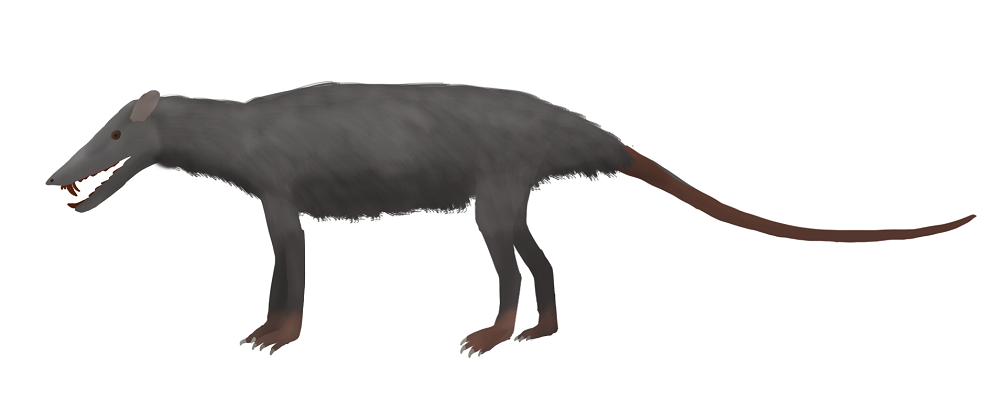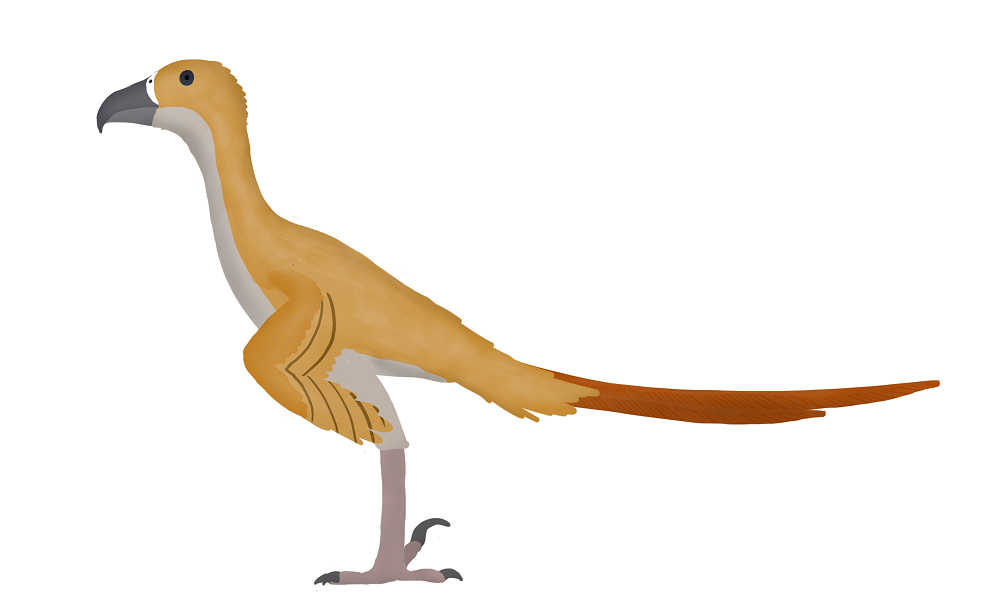
|
Central Chinese Grassland
62 million years hence
The early Tularean is a time of crossroads. For a brief interval at the beginning of the Proximozoic, the Atlantic Ocean had widened enough that Siberia and Alaska are once again connected by a land bridge. Australia has also moved north, making it possible to island-hop to southeast Asia. One could walk from South Africa to Mexico. The grasslands and jungles of eastern Asia are a meeting grounds for creatures from throughout this short-lived supercontinent, only recently recovered from the Telogene-Tularean extinction event.
The plains of central Asia are populated by new groups of herbivores that evolved after the extinction. Descendants of geese, rabbits, and rodents are the main groups of herbivores, while the local predators are descended from shrews, parrots, and monitor lizards. Other clades that continue to prosper include songbirds, bats, snakes, and insects.
| Dromaianser |
Killer shrew |
Psittacoraptor |
|
Click on a tab to learn more about that species.

Dromaianser asiaticus
Among the clades that survived the extinction at the end of the Telogene were waterfowl. They quickly diversified in the aftermath, leading to the appearance of the clade Terranserae around 70 myh. Terranserae is a diverse, flightless, and herbivorous clade descended from geese. Unlike the flightless anseriforms of the Cenozoic, Terranserae will do well in the new hothouse of the Proximozoic.
Dromaianser can grow up to two meters in height. Already their wings have atrophied and now useless for flight, but they are still implemented in brooding and visual display. They are swift-footed and adapted for grazing, with toothlike serrations on the bill that assist with snipping plant matter. Dromaianser lives in open grasslands, aggregating in flocks that generally contain up to 50 individuals. Males and females are the same size, but males are darker in color and have iridescent blue wing and tail feathers.

Episorex kelloggi
The extinction event wiped out many mammal groups of the Cenozoic. Among the victims were many carnivoran lineages, such as canids and felids. In the wake of the extinction, shrews seized the opportunity to grow in size and fill macropredatory niches. This lineage has taken root as a prominent predatory guild throughout the Proximozoic.
Episorex is an early exemplar of these killer shrews. Killer shrews are more sight-based predators than their ancestors, but their primary senses are still smell and hearing. While killer shrews are not star athletes in either speed or strength, they have inherited a venomous bite from their ancestors. After an initial attack, they may follow prey over long distances until it has succumbed to the venom. Episorex is not a social genus, only coming together for mating and mob-hunting. Species of Episorex range across Africa and Eurasia.

Psittacoraptor sp.
The early Proximozoic bears witness to the evolution of a new lineage of parrots: Psittacoraptora. Psittacoraptorans are a varied group of carnivores and omnivores, which have largely or exclusively terrestrial lifestyles. They are common, adaptable, and intelligent. Psittacoraptorans vary in lifestyle and social organization; some species are solitary, some hunt alone but live in groups, and some are coordinated hunters of large prey.
Psittacoraptor is widespread throughout North America and Asia 62 million years hence. Standing around a meter tall, it has evolved sharp talons on its feet, including a distinct "sickle claw" on digit I. It is flightless, but its wings are still useful during prey capture - it employs a form of raptor prey restraint, similar to accipitrids and dromaeosaurids. As a rule, Psittacoraptor does not attack prey much larger than itself when hunting alone. Most of its diet consists of rodents, lagomorphs, and flightless birds.
|
|




